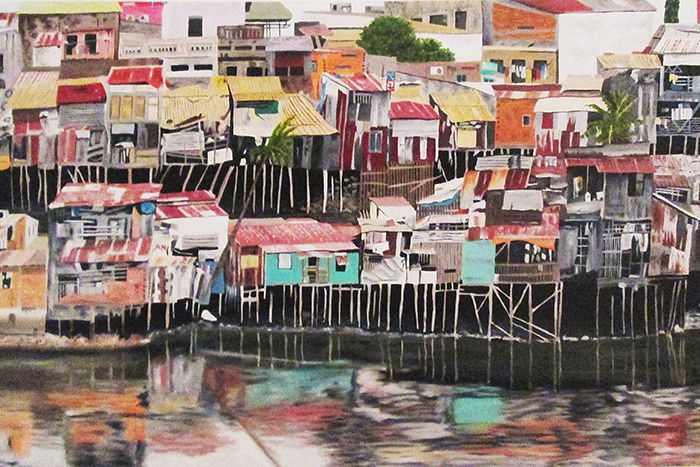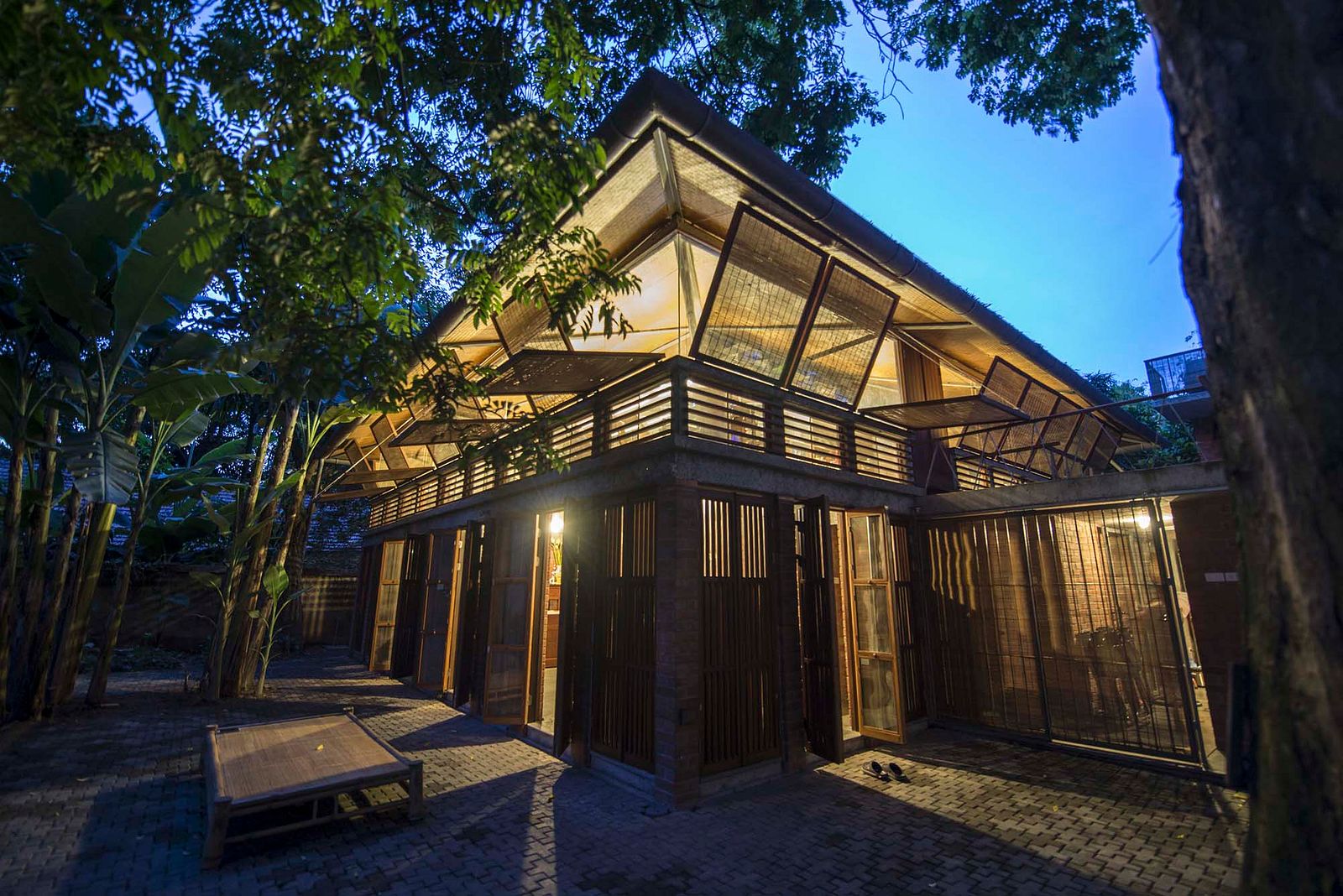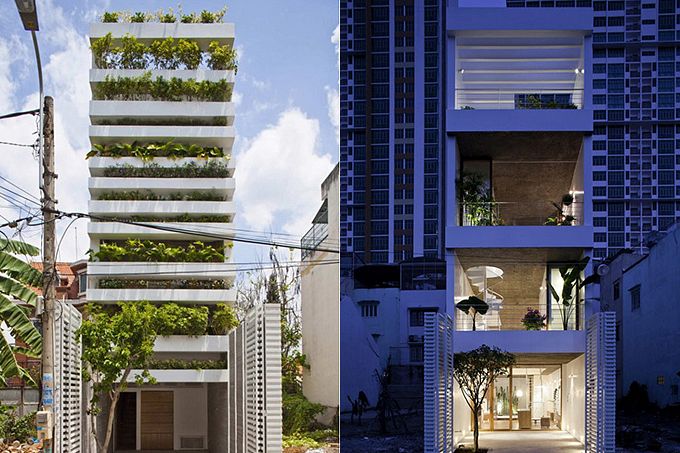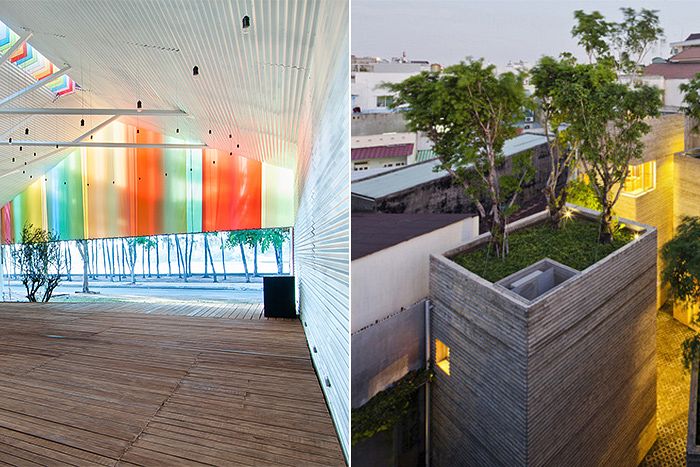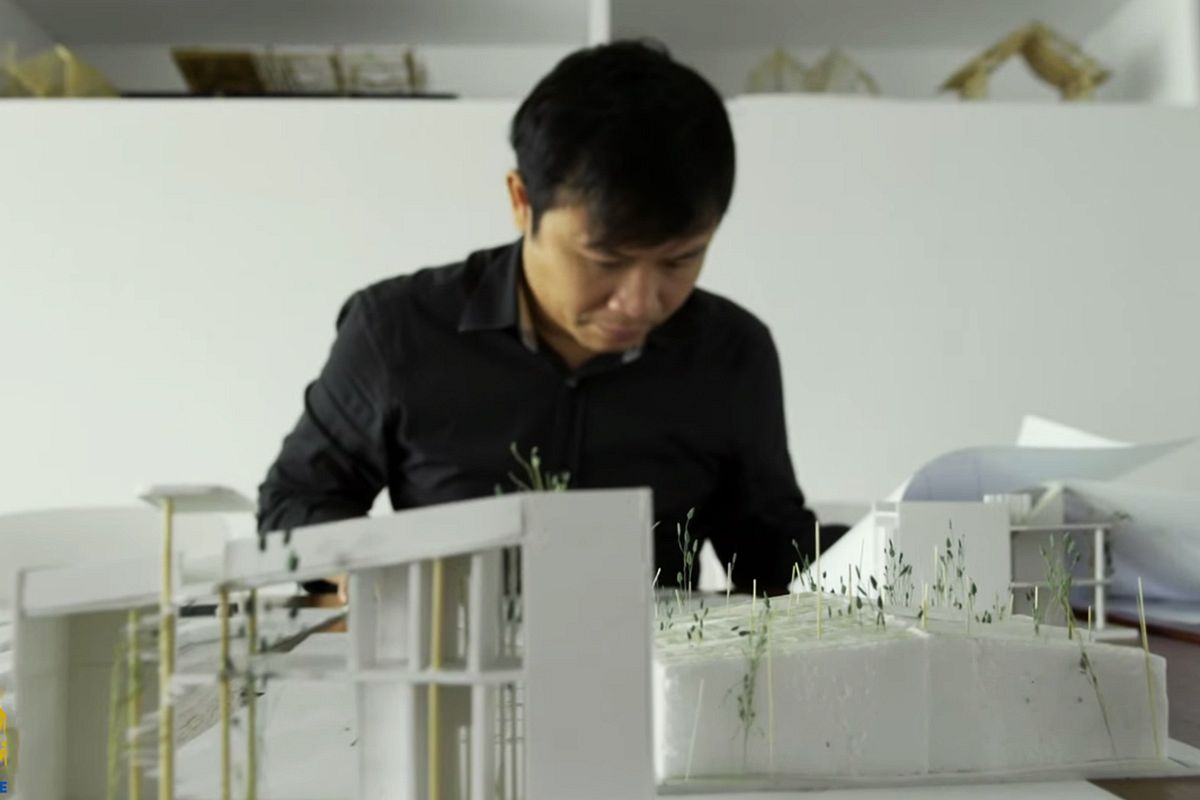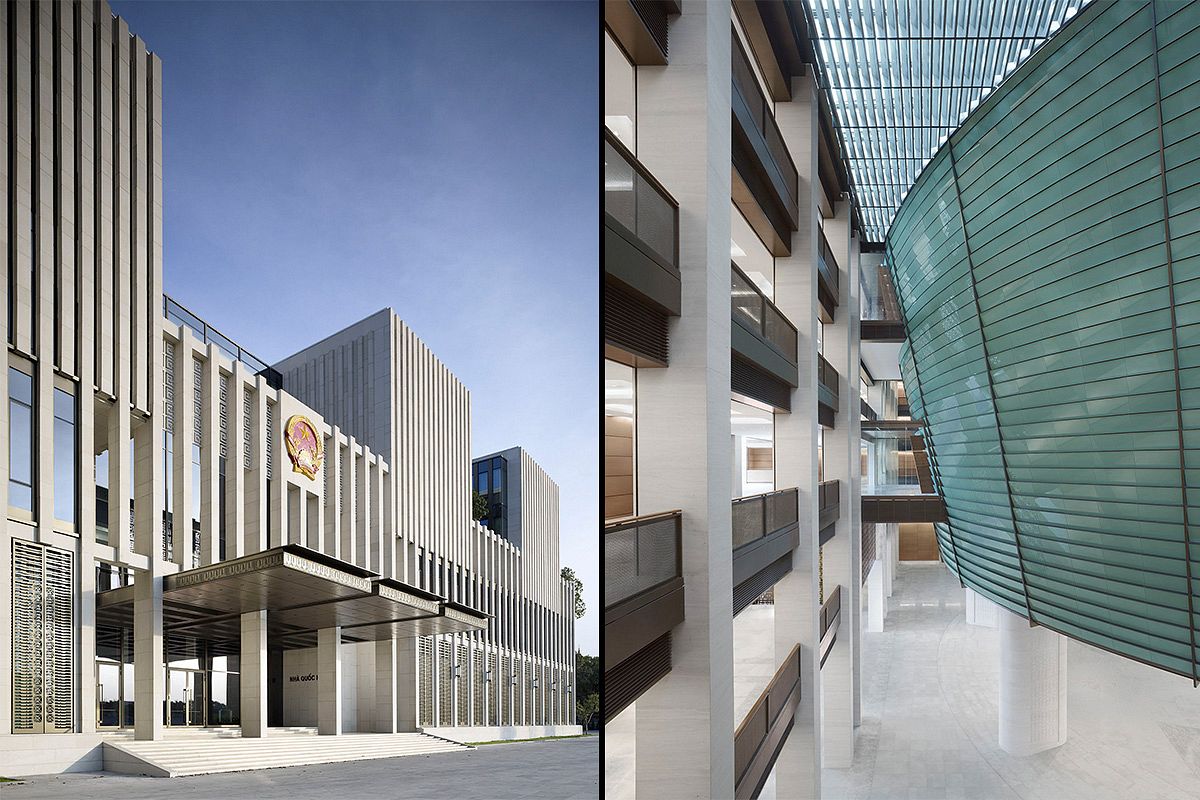Stories have recently surfaced about historical buildings in Saigon that have been or are on their way to being destroyed to make room for new, modern offices and luxury apartments.
The Catinat Building and 213 Dong Khoi are just the tip of the iceberg but are worthy examples of a division in opinions that has exploded on social media, the extremes being the absolutist pro-modernisation supporters and the melancholic and nostalgic believers of preservation.
In his recently launched exhibition at deciBel Lounge, Canadian painter, Michael Hern, shows two ongoing projects about buildings, the first concerns famous heritage structures, such as the Hotel de Ville, Notre Dame Cathedral and the Opera House; while the second depicts common residential buildings. A strong distinction between the two sets can be seen in the technique applied, the style and the effects.

The first group consists of ink drawings, rich in details concerning the building’s structural and architectural elements, which evoke an eternal and solemn allure to these monuments, which are often drawn isolated from the natural surroundings in which they live.
For the common houses from the second bunch, the Stacked series, Hern dismisses the rules of architectural perspective. He took photographs of existing homes, then slightly rearranged their composition by using Photoshop and ultimately drawing or paint them on canvas; “I tried to keep them [the buildings] as real as possible but I want to exaggerate the effect of their natural composition,” explained Hern.

In fact, the houses in the Stacked series appear to be just one multi-coloured building due to the lack of depth and perspective, Stacked n. 7 for instance, is a composition of multiple houses and shops crammed together which is a familiar scene from Saigon’s skyline. “It is fun to draw them, I like to exaggerate the effects and that is why most of the time I shoot only the front of the buildings. Other times, I might photograph them from a particular angle because I want to capture worn out parts, the stains on the walls and so on.”

Hern‘s interest for architectural subjects started before he arrived in Vietnam two years ago. He began painting light reflections from buildings’ windows, he continued to explore this subject in various countries he lived and visited like Korea, Indonesia and China, “I find the architecture here more interesting than in Korea where it is more grey and commercial. It is sad that high-rise buildings are taking over everything. I remember when I went to visit Mount Bukhasan [South Korea] and I found some beautiful houses in what by then was a ghost city because they were going to demolish all of them. I was so lucky to have had the chance to see them. I try to paint as much as possible houses and buildings that are unique.”
As part of the exhibition, Hern also painted a mural on site, “it is loosely based on the view I had from my hotel when I was in Nha Trang. I visited the city years ago and this time when I came back, the skyline was blocked by tall buildings that made it impossible to see the sky and the sunset.” The colourful piece is a dreamy, surreal Nha Trang, which seems to be underwater and inhabited by green creatures, “I wanted people to think weather they [the creatures] are creating or destroying the city. One of them is ripping off one rooftop, the other has a remote control, maybe he is controlling the other ones, others are carrying brick blocks and so on.”
Hern’s show reminded me of the work by Vietnamese artist Nguyen The Son exhibited last year at Eight Gallery. Son creates phot-rilievos of Hanoian’s streets whose buildings are covered with billboards and advertisements. His intentions are accusatory towards the manipulation of people subtly provoked by the changes that these buildings underwent.

An example of Nguyen The Son's work.
Despite the two artists being substantially different in both medium and in intention, their artworks highlight the meaning(s) that old houses and buildings carry with them. What they have in common is the relation that these urban elements play with their inhabitants, which is a political tool to direct people.
Whether this tool is used to distract them from reality and have them instead focus on consumerism or to destroy their historical past in order to create hope in the citizens for a better economic future, the values of our buildings go beyond the simplified positions of modernisation against history, money against culture, destruction against preservation.
Michael Hern's exhibition will run through the 9th of August at deciBel Lounge.

